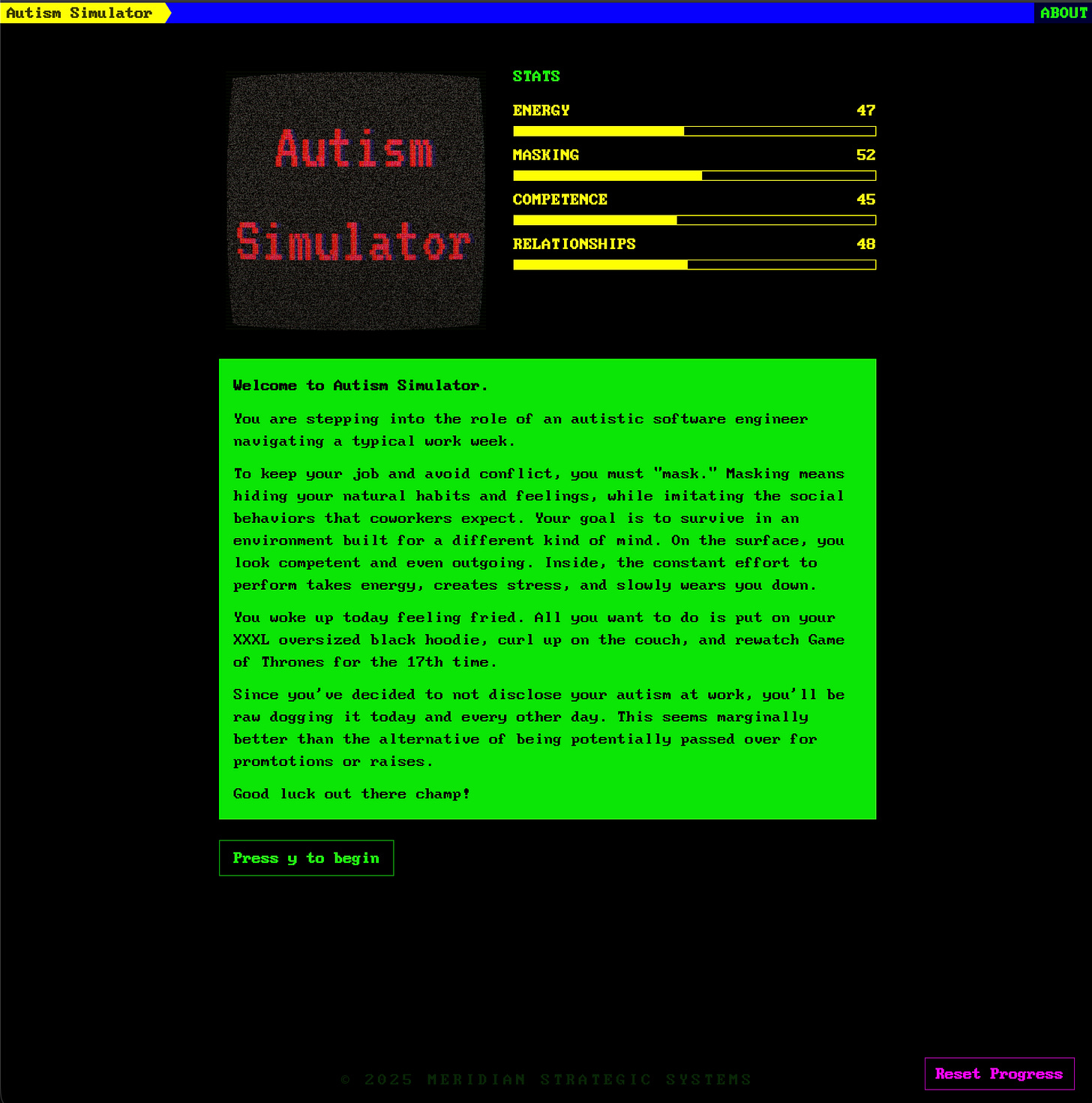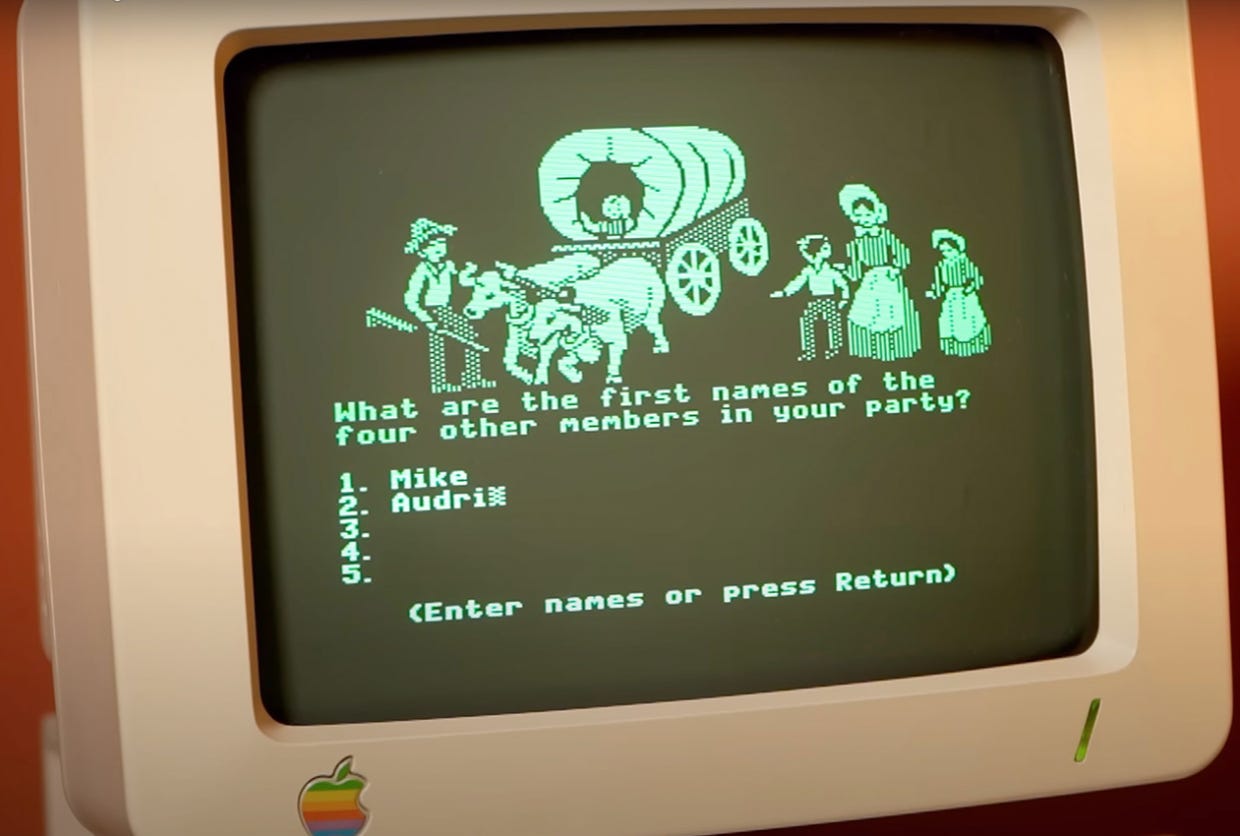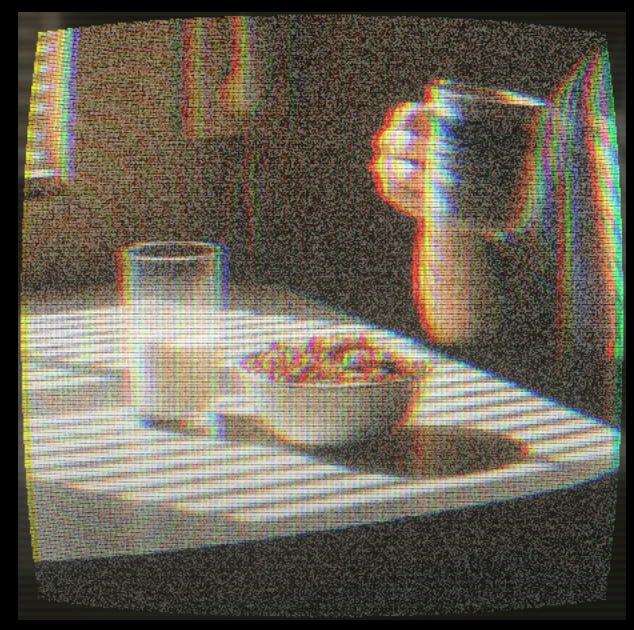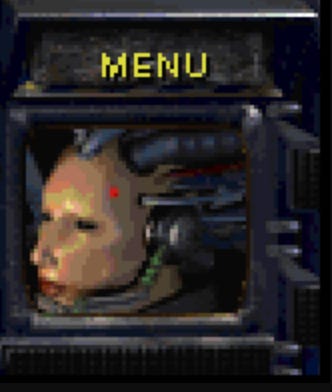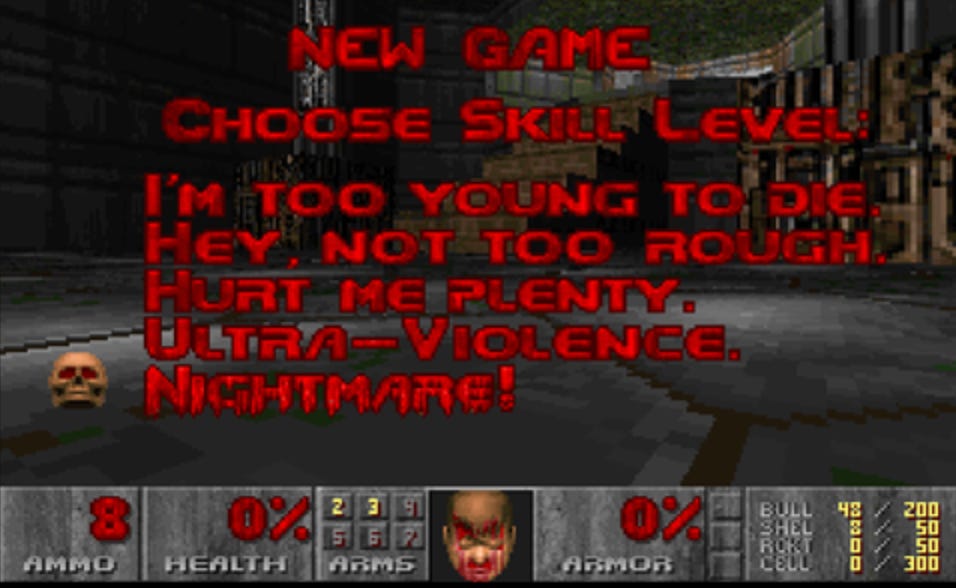The Making of Autism Simulator: 60,000 Visitors in 12 Hours
I built Autism Simulator as a passion project over the course of a week or so. 60,000 people visited the site in the 12 hour period after its launch. I want to speculate on why that happened but the dust hasn’t settled yet. This essay will focus on how I built it.
Why I Built This
I’m not neurotypical. There are a bunch of things that are really difficult for me that other people don’t even think about, like eating with friends in a quiet room or traveling. I tried to convince myself that I was just “spoiled” or “overly sensitive” because that’s all I heard most of my life when these things came to a head. Bullying myself into rejecting myself didn’t really work over the course of a few decades so I changed tack about a year ago and just started being how I am.
I wasn’t alone. I met and worked on software with a number of other folks on the spectrum. Some of them were struggling silently and we bonded over this. Others were just open about how they were, quite loudly in one case. That hyped me up. I saw a few successful examples and wanted that not only for myself but for anyone that’s masking their way through life. That particular loud autistic has no idea how influential they were in my life. If they read this they’ll certainly know who they are. I owe much of my unmasked freedom to that individual.
Okay, so if that guy could give me the courage to unmask, maybe I could do it too. That’s why I built Autism Simulator. If you don’t feel so crazy, alone, gaslit, maybe you can take a small step towards letting yourself be the vibrant and different person you are. That’s a huge fucking net-win for the universe. It verges on the spiritual, that’s how God made you!
Slapping This Thing Together
The app is almost entirely vibe-coded. I’m not really gonna discuss the merits or disadvantages of this because I don’t really give a fuck and there’s plenty of navel-gazey articles about it. LLMs are just a tool.
Design
I’m in tech but I’m really a designer. I think my personality has never been a good fit for design teams so over my initial few years in tech I was categorically rejected from any design roles. I’ve climbed high in engineering but I really consider myself a designer who took up coding so that I could build my own designs.
I new I wanted a choose-your-own-adventure game. Why? I like em and I miss Oregon Trail. First grade was tough for me. Kids are loud and they can be really mean to kids who are different. Luckily I wasn’t bullied or anything like that but school was a lot of social time for me. When we had free play time, I’d always go to the computer and play Oregon Trail. It soothed me.
The visual language is harsh and aggressive. I love coding in Neovim. I naturally gravitated towards the built-in murphy color scheme so that’s what I’ve replicated here in the simulator.
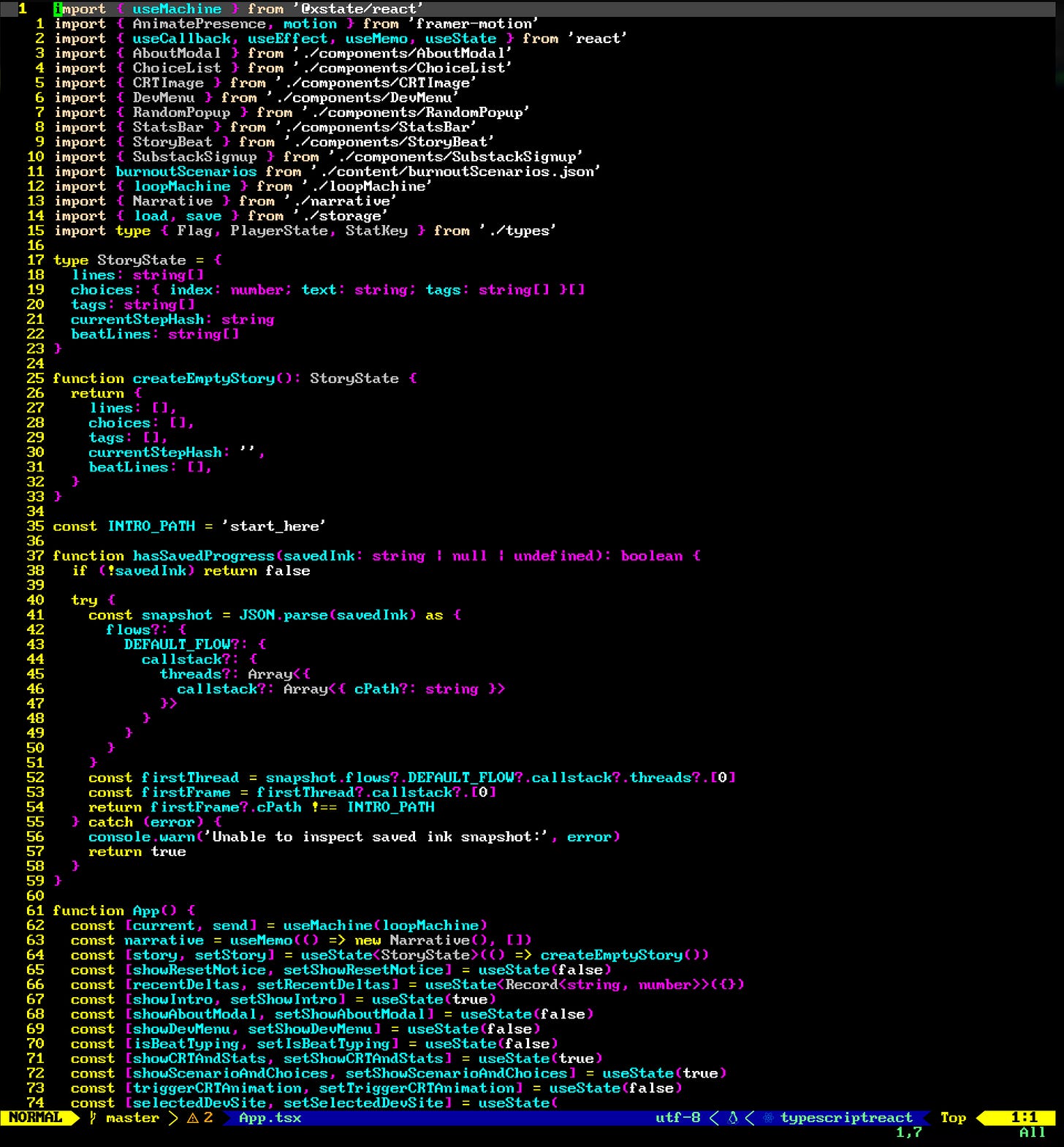
If I’m going to let my freak flag fly, might as well show you the design world that’s most precious to me. The font is BigBlueTerm437 (a Nerd Font). This reminds me of when computers were superior and inherently dissuaded normies from using them, i.e. the pre-GUI terminal based machines.
Tech
I used the normal webshit for this, react, tailwind, blahblah. What’s interesting though is the story-logic and the graphics.
The story-logic is driven by a somewhat obscure narrative scripting language called Inkle. This is invoked in my app via the InkJS library. I am pushing Ink beyond what it should do here. It’s producing stat deltas, story beats, and a bunch of other stuff it’s not supposed to do. I think Ink is a fine choice for something like this but man I really had to plane down all the rough edges for getting it to do what I wanted. In my review of tools in this space, Inkle is the best though.
The graphics are cool. I have a script that basically does this: get each story beat and iterate through each → for each, send to gemini 2.5 flash with some explainer text and request that it generates an image prompt that’s on-brand for the look I’m going for → send that over to 2.5 flash image (nano banana) and save the image. These images are loaded up in ThreeJS and I’m adding a bunch of vintage noise/NTSC/etc. shaders over the top. It’s subtle but the noise and phosphor lines increase in intensity as your stats drain the in the game :)
This kind of reminded me of some old windows games - specifically the little video window in Starcraft.
Burnout
The stats are key to the game. I wanted to convey that being on the spectrum can feel like a defense-against-burnout game sometimes. Every story decision has a stats delta, e.g. -10 masking or +3 energy. On day 1 this is how it is. Each subsequent day has an additional 25% added to negative diffs only. For example, your -10 masking choice on day 1 is a -12 (floor) masking choice on day 2, or a -15 masking choice on day 3. Your +3 energy choice is +3 energy no matter the day. AFAIK you likely can’t complete day 2 and definitely not day 3. Sorry about that but it gets the point across, you are playing on ultra-violence.
What Happened When I Posted on Hacker News
My audience is Hacker News. There’s a 1:1 venn diagram overlap. I posted this on LinkedIn but it’s mostly pointy-haired business people on there, it makes them uncomfortable, very little engagement. Conversely this surged to the frontpage of Hacker News.
There’s some good debate in the comments, some ugliness, and a lot of cathartic sharing of experience. The last is what I’m most interested in!
People shared their tips for dealing with sensory overload, insomnia, anxiety, and everything else possibly related to life on the spectrum. I’d like to think that I planted small flag with this game that says “you are not crazy, you’re not overly sensitive, you’re not alone, I’m dealing with this too.” That small domino spurred on a bunch of sharing of experience in the comments that (I hope) force multiplied this. One commenter, k2052, put it best
What’s Next
I play to open source this. The comments had a bunch of good ideas for spinoff games. This is a cool codebase. I am cleaning it up and will post it publicly soon on my GitHub.
I want to write more about working in software on the spectrum. There’s a clear need for community around this topic and the sharing of experiences. I will change the tack of my blog to focus on topics related to this going forward. If you’re not already subscribed please do so — more coming soon.


